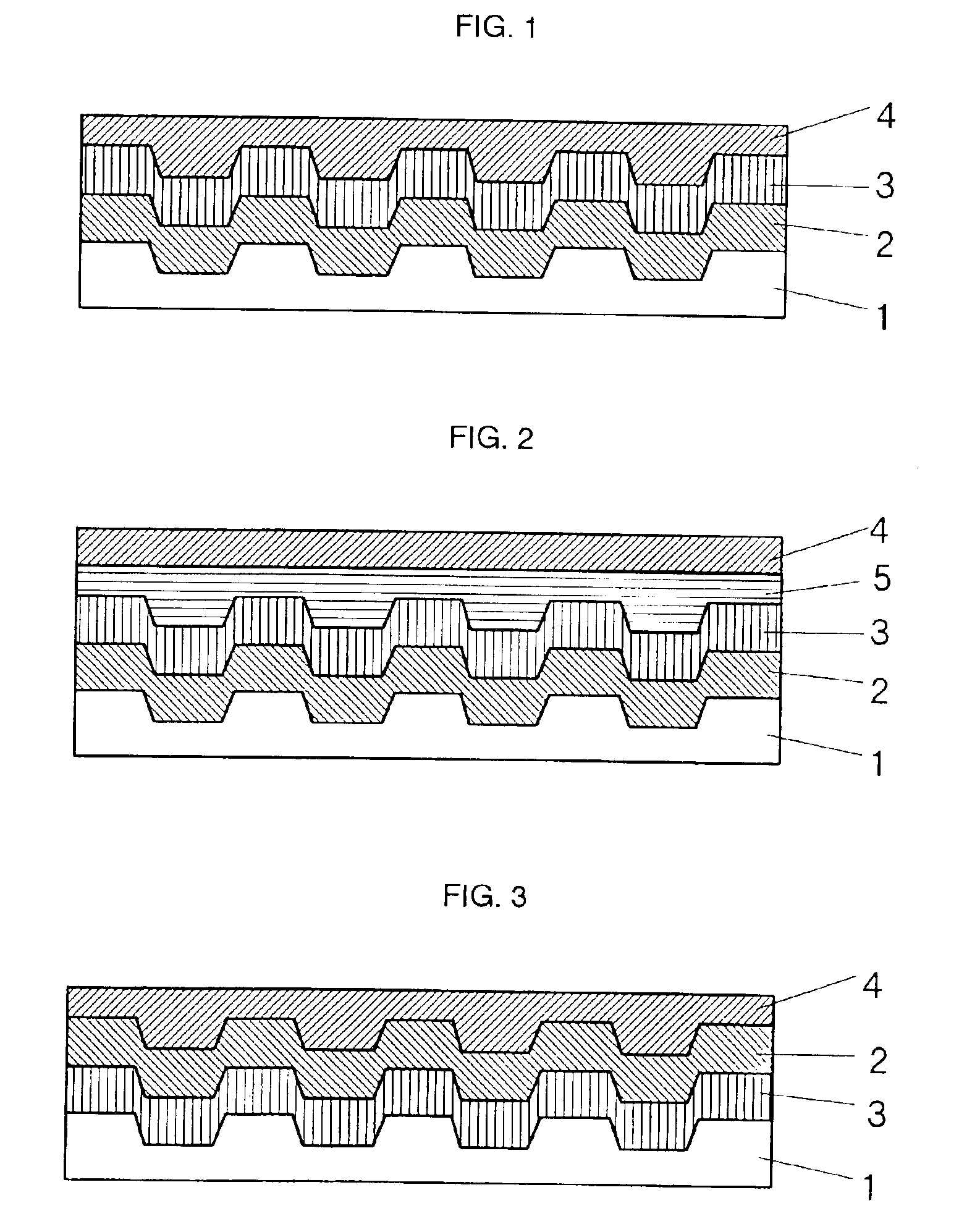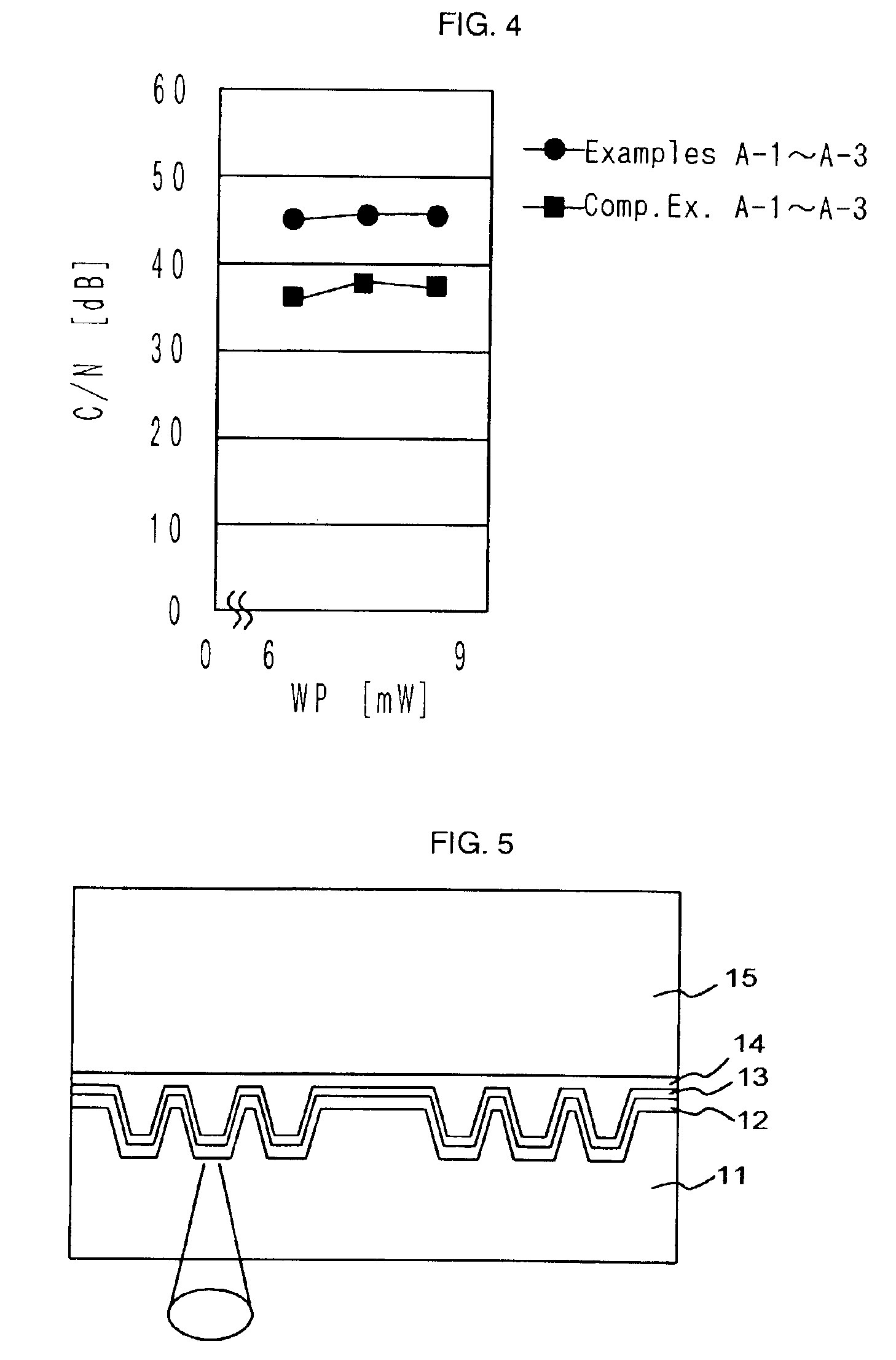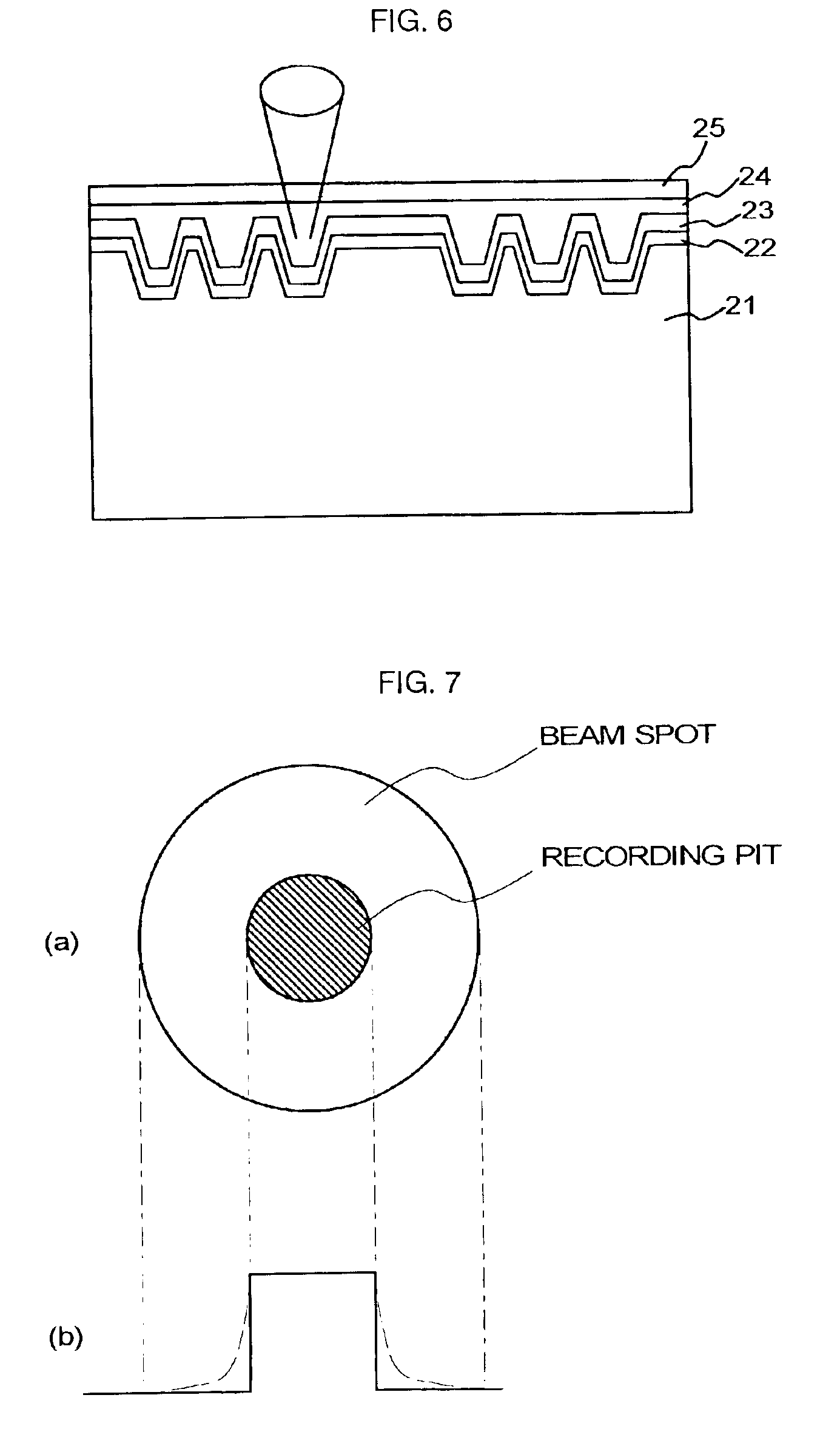Optical recording medium and novel azaporphyrin compounds
a recording medium and azaporphyrin technology, applied in the field of azaporphyrin compounds, can solve the problems of poor stability to light, insufficient recording capacity of the above conventional medium, and insufficient recording of motion pictures, and achieve good high-density recording, excellent optical recording and replay, and suppress phtoreaction and photodegradation.
- Summary
- Abstract
- Description
- Claims
- Application Information
AI Technical Summary
Benefits of technology
Problems solved by technology
Method used
Image
Examples
synthetic example 1
[0327]Synthesis of the Compound (1-1) in Table-1:
[0328]In 40 ml of acetic acid was dissolved 7.0 g of the compound (a), and 6.8 g of bromine was added dropwise thereto, followed by 4 hours of stirring at room temperature. The reaction mass was discharged into 750 ml of saturated saline and the discharged mass was filtered. The filtered mass was washed with water and then dried to obtain 7.6 g of the dibromo compound of the formula (b).
[0329]Subsequently, 5.0 g of the dibromo compound (b) was dissolved in 250 ml of ethanol and 3.8 g of anhydrous copper acetate was added thereto, followed by 7 hours of stirring at room temperature. The reaction mass was discharged into 500 ml of water and the discharged mass was filtered. The filtered mass was washed with water and dried to obtain 4.4 g of the copper complex of the formula (c).
[0330]Then, 4.4 g of the copper complex (c) and 18 g of sodium azide were dissolved in 250 ml of N,N-dimethylformamide (hereinafter abbreviated as DMF) and the...
synthetic example 2
[0336]Synthesis of the Compound (1-61) in Table-1
[0337]The compound (d) (20.0 g) and ethylene glycol (155 mL) were charged and the whole was heated at 190° C. A 250 mL portion of 1.0 mol / L sodium hydroxide / ethylene glycol solution was charged and the whole was stirred at 190° C. for 1 hour. After cooling to room temperature, 500 mL of water was added thereto, followed by extraction with chloroform. The organic layer was washed with water and saturated saline and, after drying over sodium sulfate; the solvent was removed by evaporation to obtain 16.9 g of the compound (e).
[0338]Next, 16.9 g of the compound (e) and 1 L of dehydrated methylene chloride were charged into a reaction vessel and nitrogen-bubbling was conducted for 10 minutes, followed by cooling to −5. Then, 20.6 g of bromine was added dropwise at −5° C., followed by 2 hours of stirring at −5° C. The solvent was removed by evaporation to obtain 25.3 g of the compound (f).
[0339]A 22.0 g portion of the compound (f), 50.2 g o...
synthetic example 3
[0347]Synthesis of the Compound (2-1) in Table-2
[0348]The compound (g) (4.3 g), 55 mL of 7% sodium hydroxide aqueous solution, and 45 mL of ethanol were charged, followed by 4 hours of refluxing. After the reaction mass was cooled to room temperature, it was acidified with 2N sulfuric acid to form a precipitate and the precipitate was filtered. After the filtered mass was dried, it was crystallized by n-hexane and dried to obtain 2.4 g of the compound (h).
[0349]Next, 0.67 g of the compound (8) was charged into triethanol amine kept at 170° C. and the whole was kept at the temperature for 3 hours. The reaction mass was cooled to room temperature and then discharged into 200 mL of water. The mixture was subjected to extraction and liquid-separation, and the oily layer was dried over sodium sulfate. After filtration, it was concentrated to obtain the compound (i) (crude, 0.46 g).
[0350]Subsequently, the compound (i) (crude, 0.46 g), 0.60 g of 3,4-diethylpyrrole-2-carboxaldehyde, and 20 ...
PUM
 Login to View More
Login to View More Abstract
Description
Claims
Application Information
 Login to View More
Login to View More - R&D
- Intellectual Property
- Life Sciences
- Materials
- Tech Scout
- Unparalleled Data Quality
- Higher Quality Content
- 60% Fewer Hallucinations
Browse by: Latest US Patents, China's latest patents, Technical Efficacy Thesaurus, Application Domain, Technology Topic, Popular Technical Reports.
© 2025 PatSnap. All rights reserved.Legal|Privacy policy|Modern Slavery Act Transparency Statement|Sitemap|About US| Contact US: help@patsnap.com



